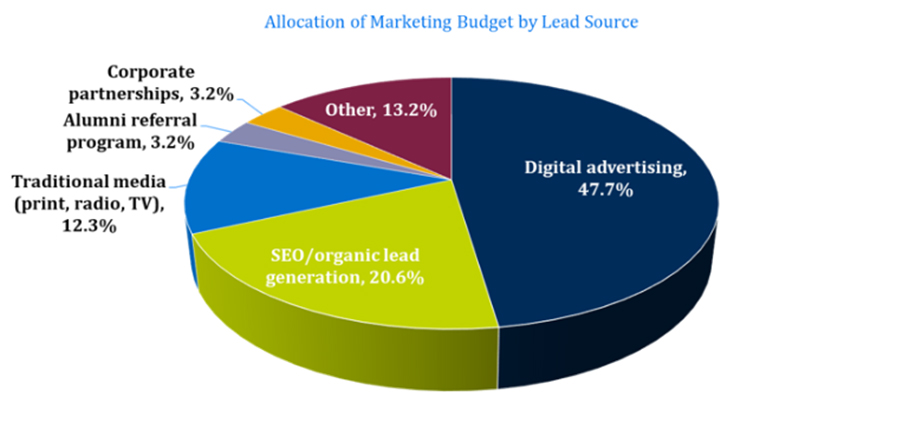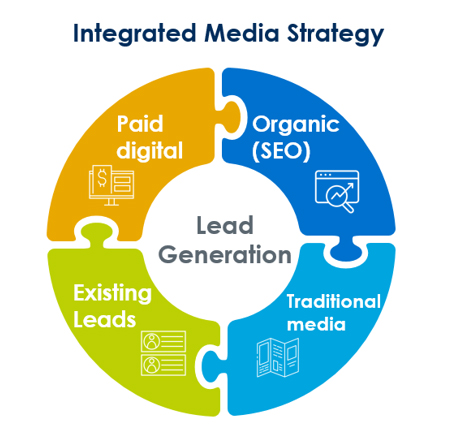enrollment
Integrated Marketing for Higher Education: Why You Need It Now

I learned the hard way the importance of moving marketing dollars from my favorite traditional channels (print, billboards, transit, etc.) to digital channels more than a decade ago. My preference for traditional marketing was shaped by my years leading traditional undergraduate enrollment, but over time it became clear that these methods were not reaching adult, graduate, and online students.
So we began to experiment with various digital marketing tactics. As my enrollment operation adopted a more sophisticated CRM and better tracking of lead sources throughout the funnel, it also became clear that digital channels had an unsurpassed capacity to assess how well our marketing dollars were working. I was not alone as I watched higher ed peers move more and more marketing dollars for graduate and online students to digital marketing—because they worked and if they stopped working you could change tactics “on a dime.”
When COVID arrived and caused a massive shift to online, it seemed to seal the deal—we needed to put our resources fully online to connect with our audience.
But like so many things related to COVID, the pendulum has begun to swing again and with increasing regularity solely digital media spends are proving to be unsustainable and missing out on strategies that have served us in the past.
Three trends that show the need for integrated marketing for higher education
We have observed at least three trends this year that are realigning how we think about marketing graduate and online programs:
1. Digital marketing costs have risen.
Since COVID there has been an extraordinary increase in the cost of digital marketing. The cost to simply maintain your current media buying presence continues to rise as costs for ads and keywords climb like the rest of inflationary pressures. That means the pursuit of an already lower yield and higher cost source has become even more pricey.
2. Platform limitations are increasing.
More platforms are implementing limitations to digital advertising and marketing efforts for privacy and security reasons. So, while there are many reasons this is good for society, it makes more difficult for marketers to figure out if digital media spends are reaching the target audience and if attribution of lead source can still be tracked.
3. The addition of targeted traditional marketing is working well.
The recent over reliance on digital marketing means that campuses are now using the most expensive strategies but with lower yield than even a year ago. They do this at the risk of missing out on other “traditional” strategies that are seeing a comeback. These strategies—which we steered away from for their lack of clear attribution (like billboards, transit, etc.)—may now provide lift or cross-penetration if used strategically and in support of a digital strategy.
Things to consider when evaluating an integrated marketing strategy

As each campus is unique, so before you many any changes I encourage you to consider two things:
First, look at your distribution of your marketing spend to see how reliant you are on digital. In a 2021 survey of campus partners, we found that nearly half of marketing dollars were going to digital advertising (and just published 2022 data indicate even higher percentages). While digital advertising is an important piece of the pie and your strategy mix, have you distributed your marketing resources across a blend of sources, strategies, and channels?

Next, think through what are other channels and platforms would give you higher yield even at the risk of lower volume. Consider these questions:
- Are you looking at SEO with intentionality and using it as a way to make a long-term investment in your web presence and to generate leads through regular maintenance of your keywords and content?
- Have you looked at your “traditional” media buying and thought through how to use it to provide “lift” for your other sources?
- Are you tapping into the lowest volume but highest yield efforts such as alumni networks and community/business partnerships?
Achieving the results you need with the marketing dollars you have
In looking at integrated marketing for higher education, it isn’t about whether traditional or digital marketing is the right or wrong choice. Each institution has to make informed choices about their marketing strategy. The goal is finding the optimal strategy that achieves the results you need with the marketing dollars you have.
Finding that optimal strategy does take effort and analysis, and it’s something my colleagues and I help institutions do every day. We can help you, too. I invite you to reach out for a complimentary consultation about your marketing strategy so you can find that balance that will maximize the enrollment impact of every marketing dollar you spend.
Talk with our graduate and online enrollment experts
Ask for a free consultation with us. We’ll help you assess your market and develop the optimal strategies for your prospective graduate students and online learners.
